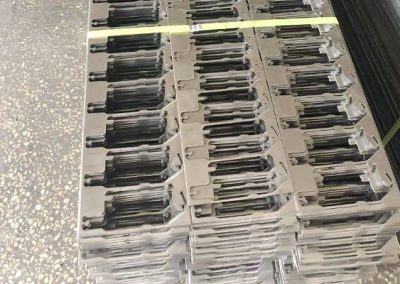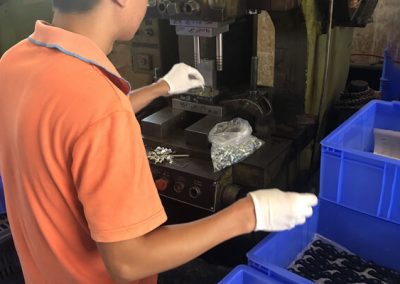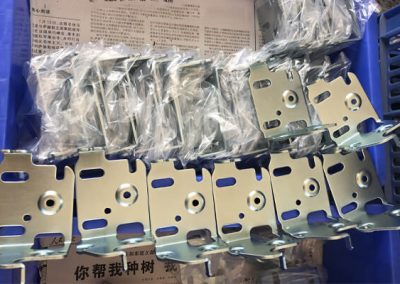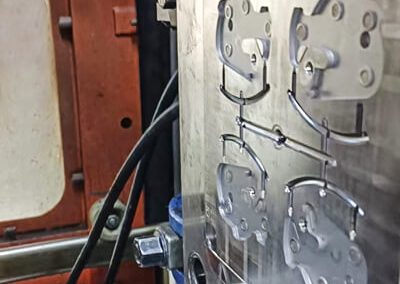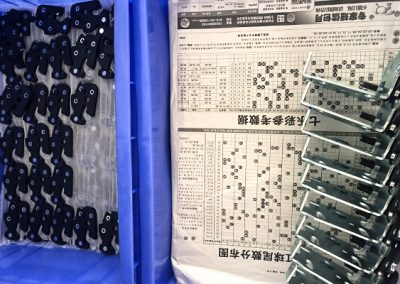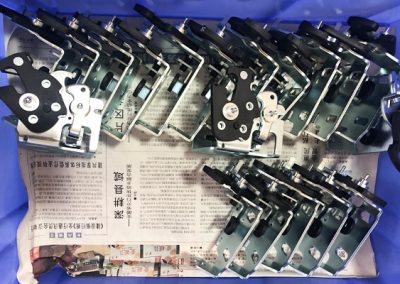Plastic Insert Molding Overview and Experience
This procedure is very popular for a variety of reasons, the main one being that it is less expensive than other inserting processes. Additionally, it offers inserts a dependable and robust attachment point, enhancing the component’s overall strength.
Plastic insert molding: what is it? What things should you think about both before and during the process? And what about insert types? Is there a greater value to this technique than to others? As we address these queries and offer more crucial details regarding this molding, please continue reading.
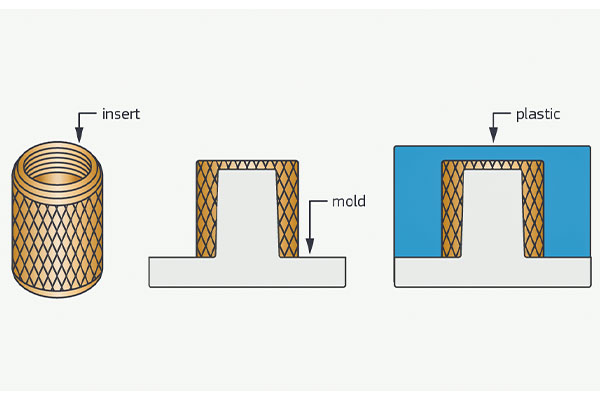
Understanding Plastic Insert Molding
Plastic insert molding is a specialized injection molding technique that involves incorporating inserts, often made of metal, into an injection-molded component. The integration of inserts occurs prior to the injection of molten plastic into the mold cavity. As the plastic solidifies upon cooling, the insert becomes an integral and enduring part of the final plastic product.
This manufacturing approach is favored across various industries due to its ability to produce robust, enduring, and lightweight components. The inclusion of metal inserts serves to enhance the mechanical properties of the plastics or thermoplastics employed in the insert molding process.
Steps in Successful Plastic Insert Molding
Plastic insert molding process closely resembles conventional injection molding. It encompasses the melting and injection of molten materials, akin to traditional plastic molding. The differentiating factor lies in the incorporation of inserts into the mold, marking the key distinction between the two methods.
Step 1: Insert Loading
In designing molds for plastic insert molding, careful consideration is given to the positioning of inserts within the mold. Ensuring the secure placement of inserts is crucial for maintaining their orientation and location. Two primary methods are employed for inserting components into a mold:
Automated Insertion:
Utilizing robots and automated processes ensures consistency, efficiency, and precision. Although the initial investment is higher, the process yields a quicker turnaround and increased production volume.
Manual Insertion:
Ideal for low-volume production, this method involves manual insertion. While lacking the precision of automation, it allows for detailed part inspection and additional operations like assembly at minimal cost.
Step 2: Plastic Injection
The injection of molten plastic into the mold is the second step, executed under high pressure. This ensures complete filling of the mold, with vents evacuating air and promoting optimal adhesion of plastic to inserts.
Step 3: Mold Opening and Part Removal
After mold filling, maintaining a set temperature is crucial for uniform solidification. Once cooled, the mold opens, facilitating the removal of the molded part.
Step 4: Sprue Separation
Molded parts are typically attached to sprues, requiring separation for use. Caution is exercised to prevent damage or loss of the molded part during this process.
Step 5: Post-Processing
Post-molding treatments include deburring, heat treatment, surface finishing, and humidity control to enhance the final product’s quality and appearance.
Key Considerations
During plastic insert molding, careful attention must be given to mold design to protect inserts from potentially damaging temperatures and pressures. Other considerations include maintaining insert position, selecting undercut features for added strength, and partnering with reputable firms for optimal results. Choosing a trusted company with expertise in specific technologies and component assembly is vital for achieving high-quality plastic insert molding outcomes.
Plastic Insert Molding Manufacturing Case Study
This is a case of insert molding manufacturing. Its main steps are:
- Plate stamping out product shape
- Punching, bending, shaping, grinding, electroplating
- Develop insert molding mold
- Metal inserts that require insert molding are put into the mold for injection molding processing.
- Assemble the entire product
Considerations Before Plastic Insert Molding
Before embarking on the complex process of plastic insert molding, there are several factors to consider:
Types of Inserts
The chosen inserts should be able to withstand the temperature and pressure variations that occur during the molding process.
Insert Location
The location of the insert impacts the forces it will endure over time. Consider the function of the insert and the amount of plastic required to securely hold it in place.
Narrowing the Gap Between Metal Part Inserts
Reducing the gap between the metal insert and the molten material enhances the reliability of the final composite product.
Selecting Appropriate Resin and Molding Conditions
Carefully choose the resin and molding conditions, especially when dealing with delicate components like electrical parts or glass. Resins that offer good sealing and fixation properties are desirable.
Choosing the Right Mold
The mold not only shapes the molten material but also ensures the insert remains in position during the molding process. Select an injection mold specifically designed to securely hold the inserts throughout the process.
Cost Considerations
Cost-sensitive parts require evaluating the overall expenses, including the cost of inserts and operator labor. Additionally, analyzing the potential increase in piece price due to the addition of inserts is crucial.
Production Volume
Determining whether to use manual or automated loading depends on the production volume. Conducting a cost-benefit analysis and understanding production requirements will aid in choosing the appropriate loading method.
Advantages of Plastic Insert Molding
Insert molding offers several advantages over other manufacturing processes, making it a preferred choice for various applications. Here are some key advantages:
Reduction in Assembly Cost
Insert molding is a cost-effective process as it eliminates the need for post-molding assembly and separate parts installation. This reduction in assembly steps not only lowers costs but also minimizes motion waste and saves production time.
Reduction in Size and Weight
Since plastic insert molding utilizes minimal material, it reduces material waste, extension, and overall cost. Additionally, it eliminates the need for connectors and fasteners, resulting in components that are lighter in weight and smaller in size. The integration of metal inserts into plastic parts also enhances their strength.
Increased Design Flexibility
Insert molding offers virtually unlimited design configurations, providing designers with greater flexibility. It allows for the incorporation of features in plastic parts that make them more robust than traditional parts. This process also facilitates a smooth transition from plastic to metal components.
Improved Design Reliability
The thermoplastic material used in plastic insert molding firmly holds the inserts in place, minimizing the risk of parts loosening. This process helps prevent design issues such as misalignment, improper terminations, and other potential problems, thus enhancing the reliability of the design and the part. The thermoplastic resin also improves the design’s resistance to shocks and vibrations.
Additional Advantages
Insert molding further offers benefits such as improved corrosion resistance, reduced post-molding assembly requirements, and enhanced design strength and durability.
Overall, plastic insert molding provides a cost-effective solution with streamlined assembly, reduced size and weight, increased design flexibility, improved reliability, and additional advantages that contribute to the overall efficiency and effectiveness of the manufacturing process.
Applications of Plastic Insert Molding Across Industries
Insert molding has become the preferred manufacturing process in various industries, offering versatility and efficiency in producing a wide array of parts. Here are notable sectors where plastic insert molding finds extensive application:
Aerospace
In the aerospace industry, plastic insert molding is instrumental in crafting components such as aircraft seats, stowage bin latches, lavatories, handles, and user interface switches. This method contributes to lighter aircraft, enhanced component strength and durability, and streamlined manufacturing and assembly processes. Additionally, insert molding supports improved industrial design within the aerospace sector.
Automotive
The automotive industry embraces insert molding to replace metal parts with more durable plastic alternatives. This transition results in the production of lightweight automotive components, leading to improved fuel economy. Beyond weight reduction, insert molding in automotive manufacturing reduces assembly and labor costs while enhancing design reliability and flexibility.
Medical Devices
Insert molding plays a crucial role in the healthcare sector, enabling the production of a spectrum of medical devices, from simple to intricate. Applications span from sutures to implants and include the manufacturing of electronic devices used in medical settings. Common examples encompass tubes, medical equipment components, dental instruments, prosthetics, medical knobs, blades, surgical instruments, and medical enclosures.
Consumer Electronics
The consumer electronics industry leverages insert molding to streamline assembly processes by eliminating the need for fasteners and soldering. Applications range from encapsulating threaded inserts and wire plugs to producing digital control panels, assemblies, knobs for appliances, and military equipment.
Defense
Insert molding is indispensable in the defense industry for crafting cost-effective, efficient, and lightweight military precision equipment. Examples include handheld communication devices, weaponry, battery packs, munitions, and housing for binoculars and monoculars. The process contributes to the production of durable and reliable components vital to defense applications.
Plastic Insert Molding Versus Overmolding
Insert molding and overmolding are distinct processes employed in combining plastic and non-plastic components, each with its unique approach. Although these methods share similarities, their divergence lies in the procedural steps required to achieve the desired outcome.
Plastic Insert Molding:
Insert molding is characterized by a singular injection molding method, streamlining the process for efficiency. This approach results in a quicker production cycle and reduces the overall quantity of materials utilized. While insert molding is a cost-effective and expedited technique, it may yield components with a slightly shorter lifespan. This process is suitable for various applications, emphasizing speed and material efficiency.
Overmolding:
In contrast, overmolding involves a twofold or double injection molding technique. While this process incurs higher costs due to the increased material usage, it often leads to the creation of products with an extended lifespan. Overmolding is particularly beneficial for producing items requiring added durability, such as ergonomic grips and bump stops. The additional layer of rubber-like plastic enhances both functionality and longevity.
To delve deeper into the distinctions between plastic insert molding and overmolding, refer to this comprehensive guide. Understanding these differences is crucial for choosing the most suitable molding technique for specific manufacturing needs.
Create Custom Insert Molded Parts
Are you interested in using plastic molding services but not sure if this is the best way to create your parts? All you have to do is get in touch with us because we have a group of qualified engineers working for us here. Our highly skilled engineering staff would be pleased to offer the finest guidance regarding the optimal manufacturing procedure for your components.
One thing our many clients can attest to is that we constantly adhere to specifications to produce parts that satisfy client requirements. Thus, why do you delay? Call us right now to order your custom-insert molded components!
Get a free quote and design analysis today.
We’ll reply to you within 6 working hours.
We respect your privacy.
+86 139 2927 4777 (WhatsApp, Wechat)

